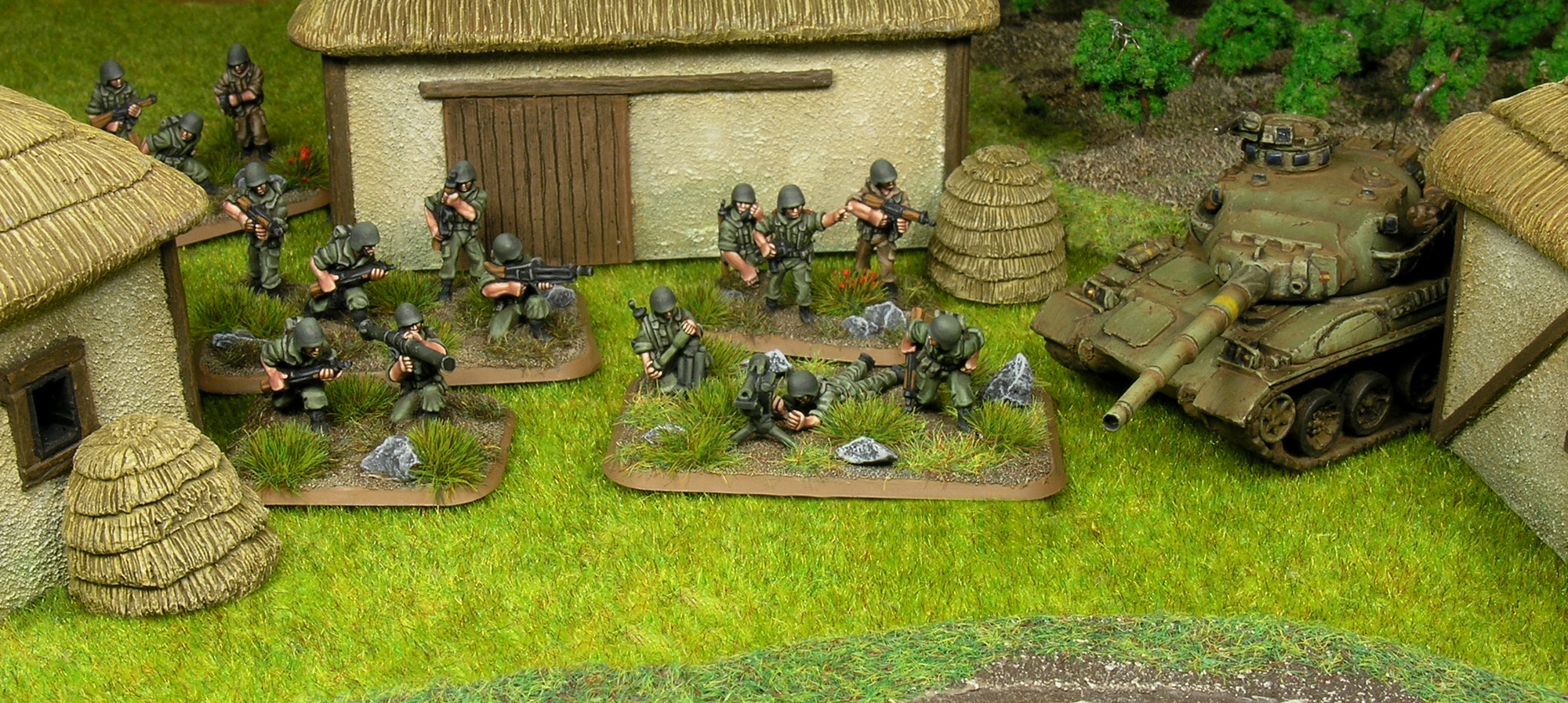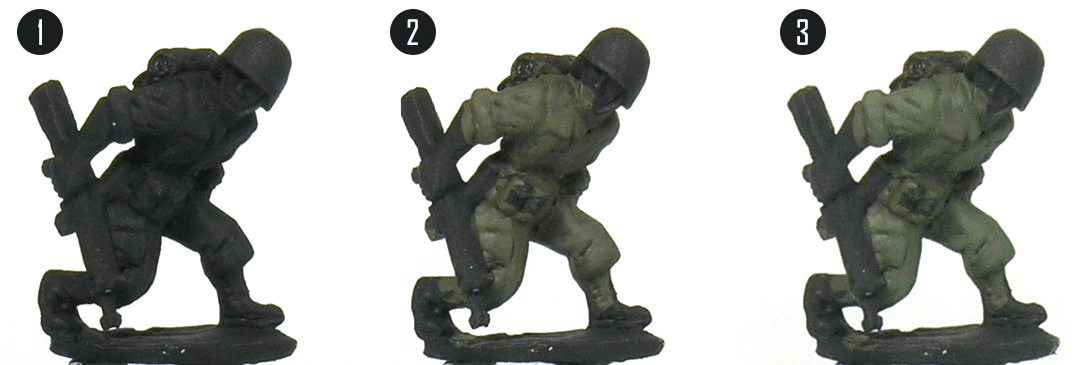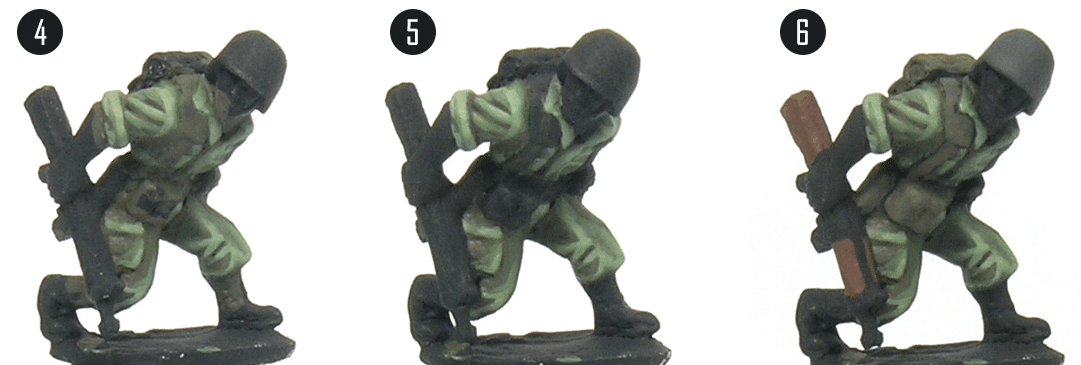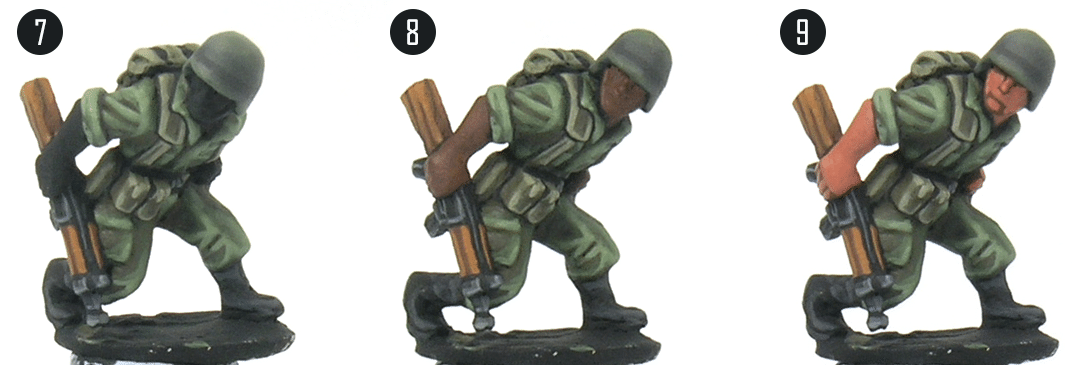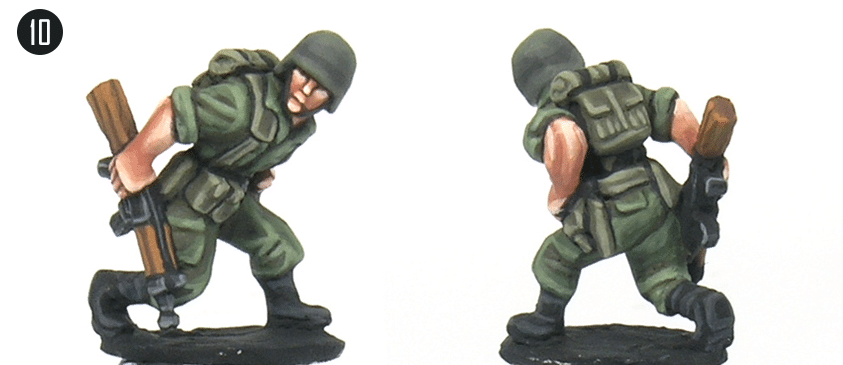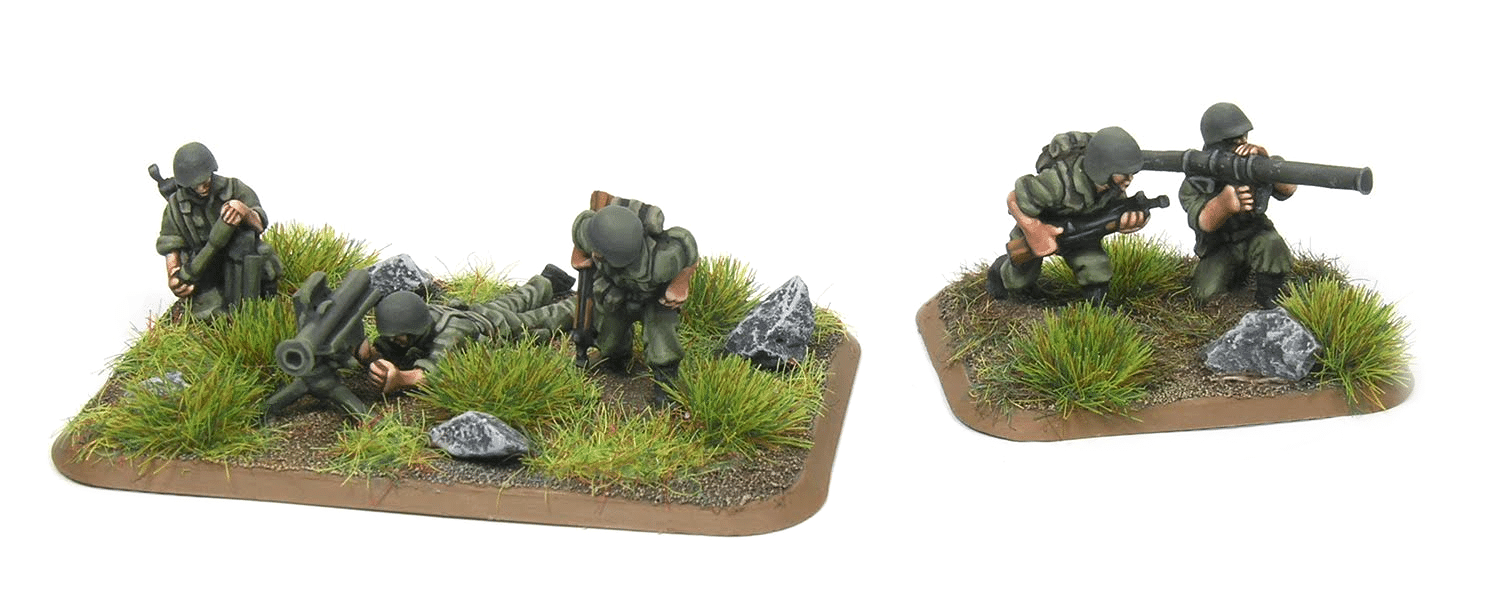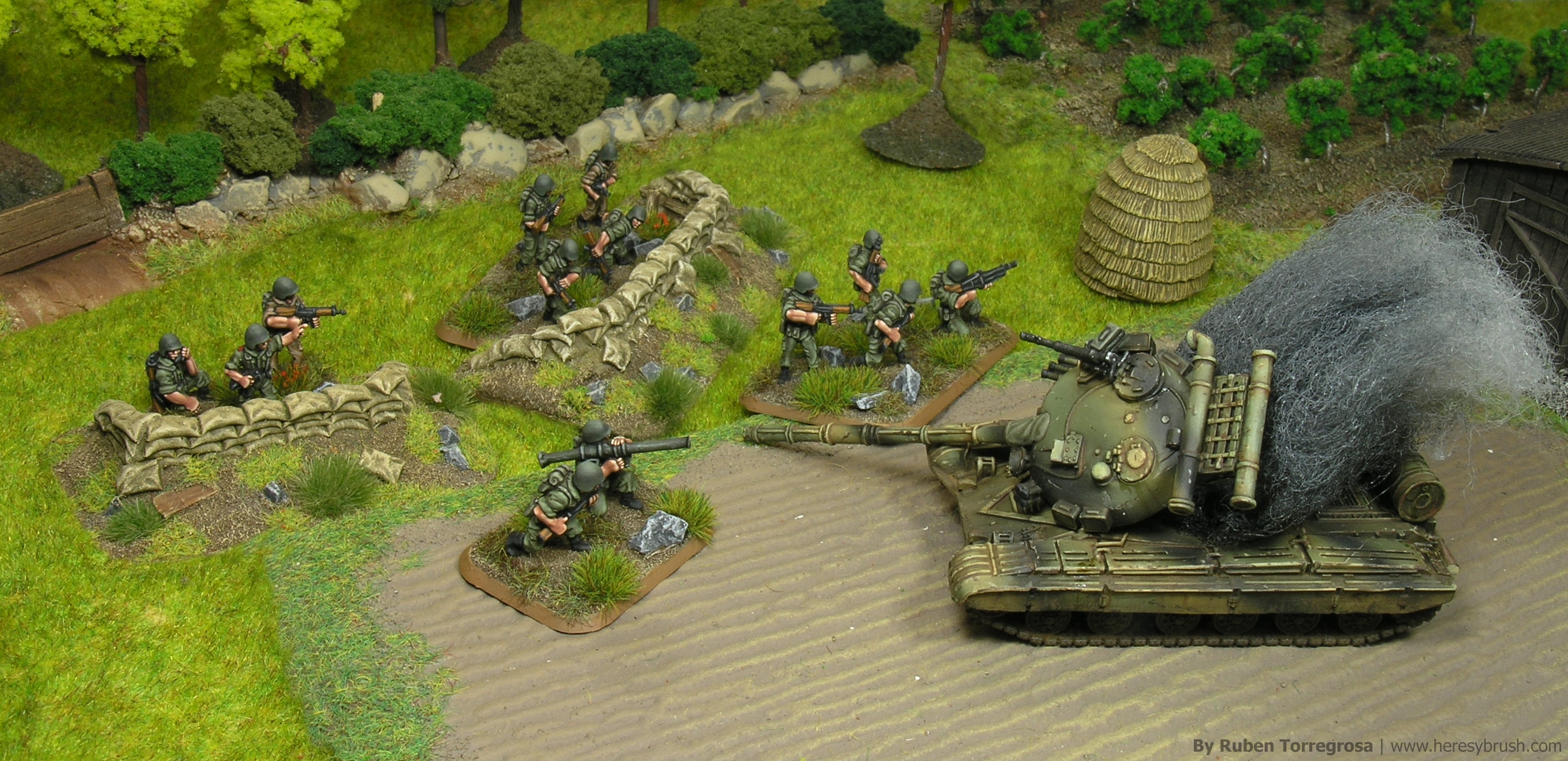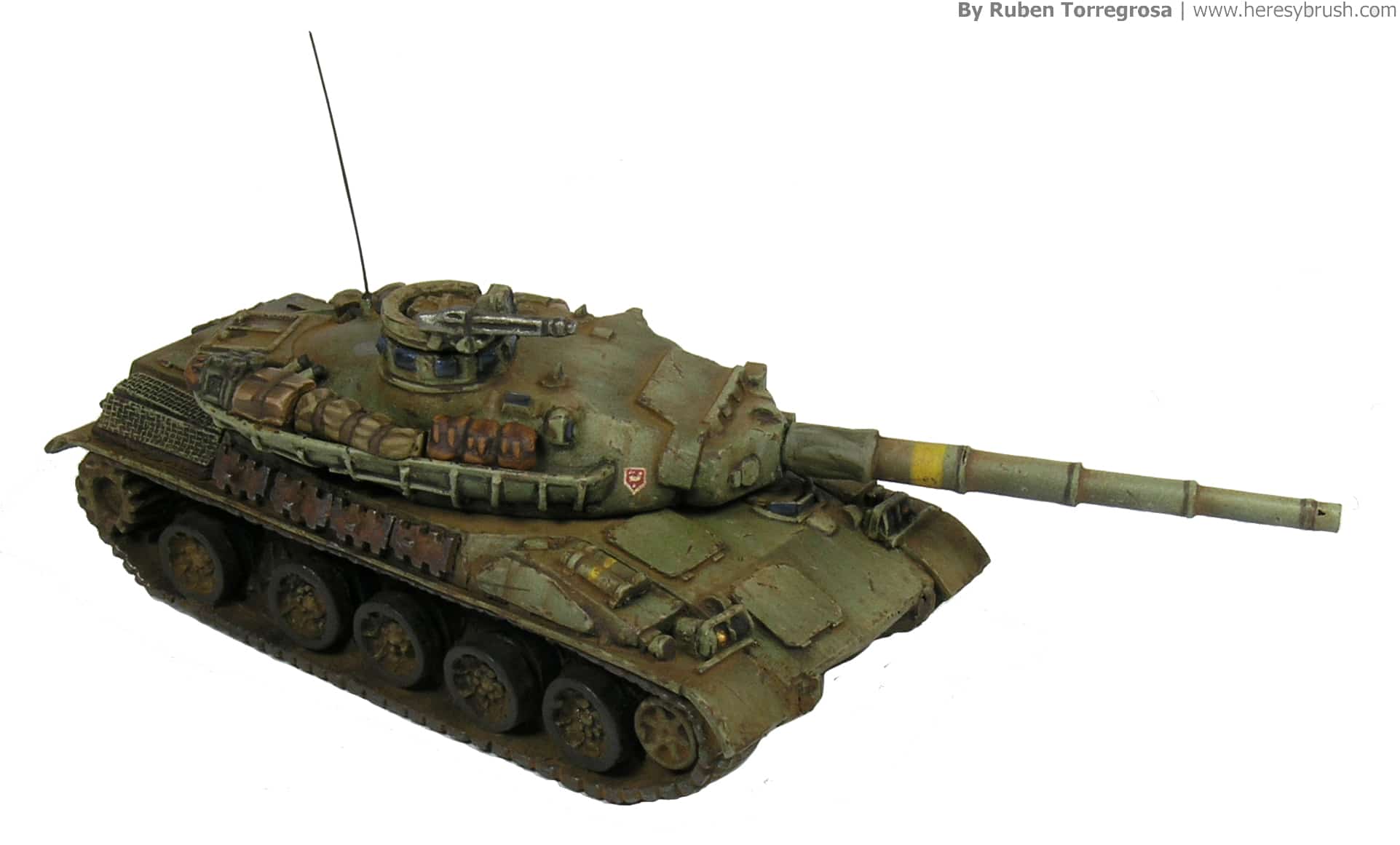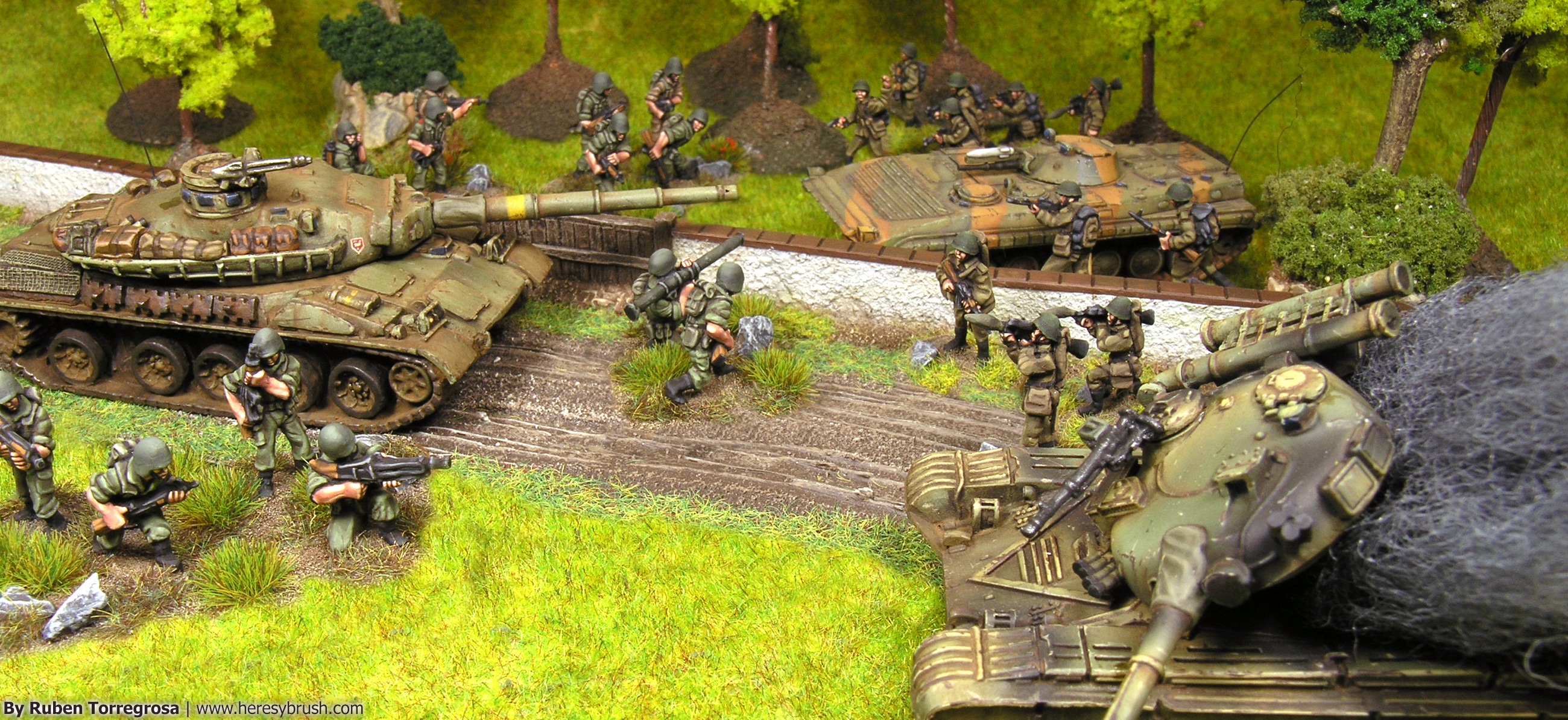
Today, I have another painting guide to share with you. If last time we saw how to paint Spanish Tercios, this time we move a bit forward until 1980. I have ad-hoc prepared a painting guide for the new Totentanz Miniatures Kickstarter campaign which covers the 1980 Spanish army in 15mm (perfect to play Team Yankee!). In this guide I show how to paint Spanish infantry in a detailed step-by-step guide, besides a couple of color sheets; one of them dedicated to the AMX-30E tank. This time the painting guide has been prepared in collaboration with Modelbrush. Note that the painting guide focuses on the NATO green uniform, but we can add some variation in our units by adding the old fashion “pea” uniform or the new woodland camouflage (in late 80’s). But do not paint each miniature with a different one! Find a balance and use the logic. For example I have painted the most part of my miniatures with the NATO green uniform and a few with the brownish version. No camo at all! On the other hand, I have used two colors to reproduce the green color: USA and Russian uniform. We can mix this two colors in very different proportion to obtain several tones of the same color. Exploit this feature! Unfortunately I did not prepare a step-by-step guide for the tank. But after reading the color sheet you can follow this tutorial to learn how to paint tanks in 15mm. I must acknowledge Gaizka Basaldua for the English translation of the guide. You can download the PDF painting guide from the link that can be found at the end of this post.
 If you do not know Totentanz Miniatures, I recommend you to visit their website. They can be pride of producing the BEST 30 years war range of miniatures in 15mm, thanks to the skills of the sculptor Angel Terol. You have probably seen some of their miniatures in my blog, since I love them. And with this Kickstarter campaign they are planning to produce a new range of miniatures dedicated to the 1980 Spanish army, followed by the French and Italian armies. They are not offering any rules to play with them, but we have a nice chance to use them in Team Yankee (based on Flames of War).
If you do not know Totentanz Miniatures, I recommend you to visit their website. They can be pride of producing the BEST 30 years war range of miniatures in 15mm, thanks to the skills of the sculptor Angel Terol. You have probably seen some of their miniatures in my blog, since I love them. And with this Kickstarter campaign they are planning to produce a new range of miniatures dedicated to the 1980 Spanish army, followed by the French and Italian armies. They are not offering any rules to play with them, but we have a nice chance to use them in Team Yankee (based on Flames of War).
1980 Spanish Army
Step 1 – First we remove any burr from the models with a modelling knife and a pair of files, before undercoating them. For this scale I’d rather like to use black colour, as it will help me afterwards when it comes to make the Blacklining (as we will see). I recommend that you apply your undercoat with an airbrush or a spray, rather than using a brush as it will be much thinner and homogeneous.
Step 2 – We paint the shadows of the uniforms using a darker colour than the one we really need. In this painting guide we show you how to paint the NATO Green uniform, although you can paint some of your soldiers with the veteran Chickpea uniform or even the new Woodland uniform. To obtain the NATO Green colour I have mixed equal parts of Russian Uniform (924 VMC) and USA Uniform (922 VMC), but we can vary the proportion in order to get some variety in the unit. So, to get the shadows I have just mixed this colours with a bit of Black (950 VMC) and painted the whole uniform.
Step 3 –We start to work out the highlights. When I paint 15mm miniatures I usually apply 4 or 5 coats of highlighting. For the first highlight I add a bit more of both Russian Uniform and USA Uniform to the shadow mix, making it a bit brighter. With this highlight I pretend to make the creases and reliefs stand out. For the second highlight I directly apply the 1:1 mix of Russian and USA Uniform. This new light covers a smaller surface, and still seeks standing out the reliefs.
Step 4 – Now we need to introduce more prominent highlights. In order to fulfil that, we will try to add to our last mix a little bit of White in the next two highlights: We add a little bit of White in the first one, and a bit more in the second one. We will find, once more, the same idea: Every new highlight will try to cover a smaller surface, always looking for the most exposed area. This will not be reduced just to creases; knees, necks or shoulders, for example, must be taken into account. The more contrast we obtain, the better.
Step 5 – Next step, before painting accessories, consists on applying what is called a “Black-lining”. Now you will see why I prefer to use black priming. With a thin brush and black paint we will clearly delimit all the accessories to clearly separate them from the uniform (What I do in this 15mm scale is to directly paint all the accessories black, instead of painting a thin line). If we have primed the model using black paint we will save precious time. What we are looking for with this step is a “cleanliness” effect that will help to make the model more appealing and contrasted.
Step 6 – We will start to paint the shadow colour or darker colour of each of the accessories. For the helmet we will use Bronze Green (897 VMC); Russian Uniform (924 VMC) for the webbing and backpack; and for the wooden parts of the rifle, Flat Brown (984 VMC). Remember that we will always have to use the paint a little bit diluted in water.
Step 7 – Now we proceed to paint the highlights in the accessories. To highlight the wood we will mix in a 1:1 proportion Frat Brown (984 VMC) and Orange Brown (982 VMC), and we will use just Orange Brown for the next highlight. We can paint the highlight on the wood making straight lines with the brush thus representing the grain on the wood. For highlighting the webbing we will mix Russian Uniform (924 VMC) with a little bit of White and we will mark all the edges on the webbing, magazine pouches and details of the backpack. Finally, to highlight the helmet we will mix Bronze Green (897 VMC) with Afrikakorps Tank Crew (336, VMC Panzer Aces) applying highlights concentrically to the upper part and lining the inferior edges. On the other side we will also have to highlight the boots using a bit of grey to highlight the laces and end of the boot. I have also used grey colours to highlight the metallic parts of the weapon, defining all the edges.
Step 8 – To paint the faces and the arms first we must use a transition colour, such as Flat Brown (984 VMC), not only to make it easier to apply a flesh colour (which frankly covers black quite badly) but to prepare a dark colour on which to mark the features of the face and the space between the fingers.
Step 9 – To get the shadows of the flesh colour first we will use Tan (066 VMC) to paint the whole arms except for the fingers which are painted one by one; and in the face we will mark as you can see in the photograph the nose and the jaw. By saying mark I mean that we will leave exposed a thin line of the previously used colour, Flat Brown.
Step 10 – Now we start to work out the highlights. First we mix up equal parts of Tan (066 VMC) and Dwarf Skin (041 VGC). We start to highlight areas with this mix. Take a look at the photograph. In the arm I have highlighted the upper part and the edge of the hand right next to the fingers. In the face I have highlighted the nose, cheeks, chin and upper lip. Taking into account this directions, we apply a new highlight only with Dwarf Skin (041 VGC); and finally, another highlight with Dwarf Skin mixed with a bit of White.

